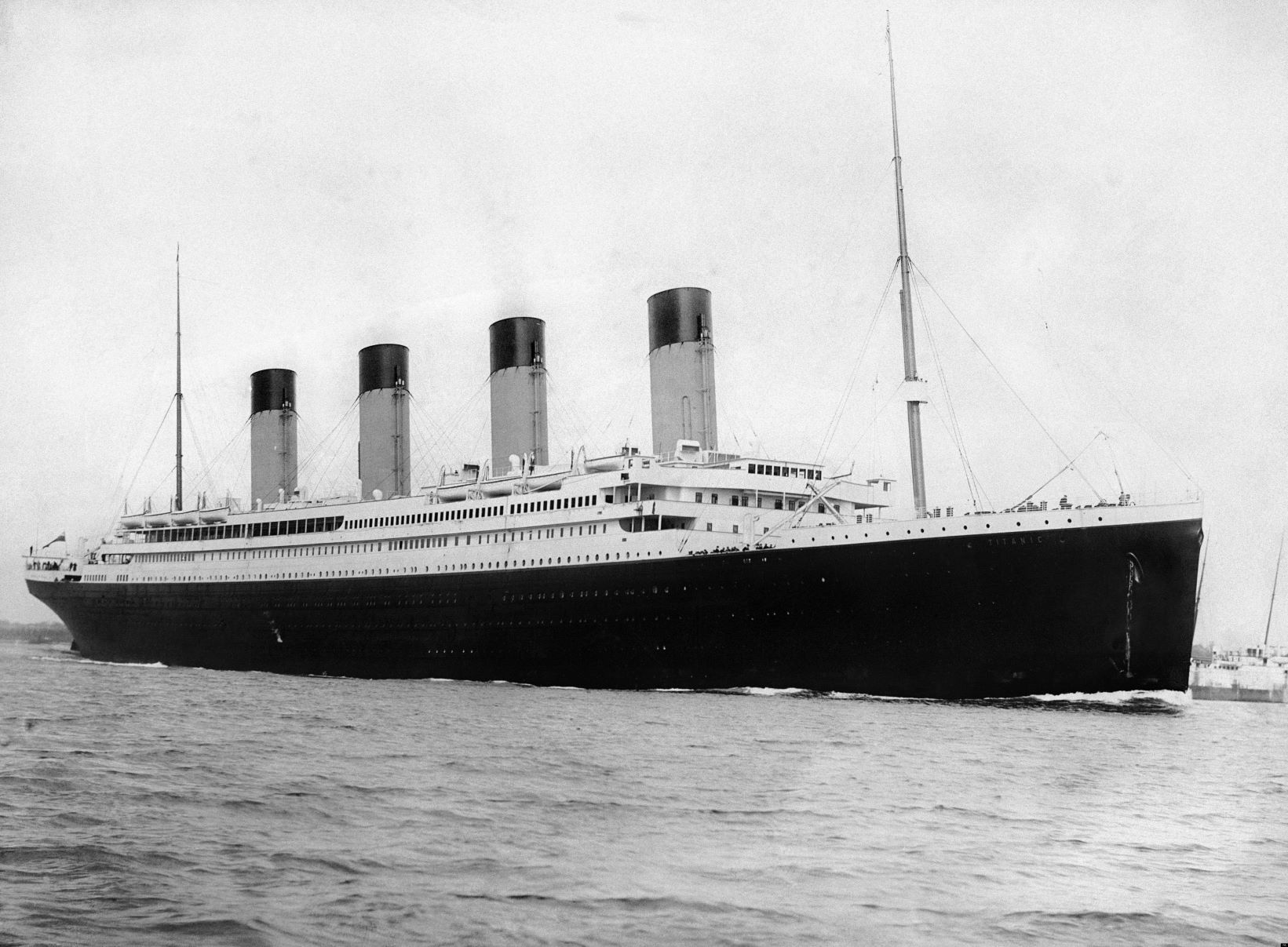Home>History>The Untold Legacy Of The Unsinkable Titanic: How It Continues To Captivate The World Today


History
The Untold Legacy Of The Unsinkable Titanic: How It Continues To Captivate The World Today
Published: February 3, 2024
Explore the enduring fascination with the Titanic and its impact on history. Discover the untold stories and legacy of this iconic ship that continues to captivate the world today.
(Many of the links in this article redirect to a specific reviewed product. Your purchase of these products through affiliate links helps to generate commission for Regretless.com, at no extra cost. Learn more)
Table of Contents
Introduction
The story of the Titanic is one that has captured the imagination of people around the world for over a century. It is a tale of ambition, tragedy, and the enduring human spirit. The Titanic was not just a ship; it was a symbol of the technological advancements and the grandeur of the early 20th century. Its tragic fate has left an indelible mark on history, serving as a poignant reminder of the fragility of human endeavors in the face of nature's might.
The Titanic's legacy is a multifaceted tapestry woven with threads of innovation, human error, and the resilience of the human spirit. From its construction and launch to its tragic sinking, the Titanic's story continues to captivate the world, evoking a sense of fascination and introspection. The enduring allure of the Titanic lies in its ability to transcend time and resonate with people across generations.
As we delve into the untold legacy of the unsinkable Titanic, we embark on a journey that unveils the layers of history, engineering marvels, and the human stories that have immortalized this iconic vessel. The Titanic's saga is not merely a historical account; it is a testament to the triumphs and tragedies of human ambition, igniting a timeless curiosity that beckons us to explore its depths and uncover the profound impact it has left on the fabric of our collective consciousness.
The Construction and Launch of the Titanic
The construction of the Titanic was a monumental feat of engineering and ambition. It was commissioned by the White Star Line, a prominent British shipping company, with the intention of creating the most luxurious and technologically advanced ship of its time. The construction took place at the Harland and Wolff shipyard in Belfast, Northern Ireland, where thousands of skilled workers toiled tirelessly to bring the vision of the Titanic to life.
The sheer scale of the Titanic was unprecedented. Measuring over 880 feet in length and weighing approximately 46,000 tons, it was a marvel of modern engineering. The ship's design incorporated cutting-edge features, including a double-hull construction and a series of watertight compartments intended to make it virtually unsinkable. The opulence of the Titanic's interior was equally remarkable, with lavish amenities such as grand staircases, luxurious cabins, and state-of-the-art facilities that catered to the needs of its affluent passengers.
On May 31, 1911, the Titanic was launched into the River Lagan amidst great fanfare and celebration. The event drew crowds of onlookers who marveled at the sheer magnitude of the ship as it made its maiden voyage into the water. The launch marked a significant milestone in maritime history, symbolizing the pinnacle of human achievement and technological prowess.
As the Titanic embarked on its journey, it represented the epitome of luxury and innovation, a testament to human ingenuity and the relentless pursuit of progress. Little did the world know that this magnificent vessel would soon encounter a fate that would reverberate through the annals of history, forever altering the course of maritime travel and leaving an indelible mark on the collective consciousness of humanity.
The Maiden Voyage and Tragic Sinking
The much-anticipated maiden voyage of the Titanic commenced on April 10, 1912, from Southampton, England, bound for New York City. The atmosphere aboard the ship was one of excitement and opulence, as passengers reveled in the grandeur of the vessel and the promise of a luxurious transatlantic journey. The Titanic's reputation as the largest and most luxurious ship in the world had garnered widespread attention, drawing a diverse mix of passengers from different walks of life, including prominent dignitaries, affluent businessmen, and eager immigrants seeking a new life in America.
However, the grandeur and jubilation were abruptly shattered in the late hours of April 14, 1912, when the Titanic struck an iceberg in the frigid waters of the North Atlantic. The collision tore a series of fatal gashes along the ship's hull, compromising its supposedly unsinkable design. As the night descended into chaos and despair, the crew scrambled to deploy lifeboats and evacuate the passengers, but the sheer scale of the disaster and the inadequate number of lifeboats meant that many were left facing a harrowing struggle for survival.
The tragic sinking of the Titanic unfolded with a profound sense of disbelief and horror. The ship, touted as unsinkable, succumbed to the forces of nature, plunging into the icy depths of the ocean in the early hours of April 15, 1912. The loss of over 1,500 lives sent shockwaves across the world, eliciting an outpouring of grief and prompting a comprehensive reevaluation of maritime safety standards and practices.
The harrowing tales of heroism and sacrifice that emerged from the Titanic's final hours underscored the resilience of the human spirit in the face of unimaginable adversity. The haunting echoes of the ship's distress signals and the solemn aftermath of the tragedy served as a stark reminder of the fragility of human endeavors and the indiscriminate power of nature.
The sinking of the Titanic marked a pivotal moment in history, sparking widespread reforms in maritime safety regulations and instigating a paradigm shift in the approach to oceanic travel. The profound impact of the disaster reverberated through the collective consciousness of society, leaving an enduring legacy that transcended the confines of time and space.
The untold stories of bravery, loss, and the indomitable human spirit continue to resonate, ensuring that the legacy of the Titanic remains etched in the annals of history, a poignant testament to the triumphs and tragedies that define the human experience.
The Aftermath and Legacy of the Titanic
The aftermath of the Titanic disaster reverberated across the globe, triggering a seismic shift in maritime safety regulations and reshaping the collective consciousness of society. In the wake of the tragedy, a wave of introspection and reform swept through the maritime industry, leading to the implementation of comprehensive measures aimed at enhancing the safety of oceanic travel. The International Convention for the Safety of Life at Sea (SOLAS), established in 1914 in response to the Titanic disaster, set forth stringent regulations pertaining to ship design, safety equipment, and emergency procedures, laying the foundation for modern maritime safety standards that endure to this day.
The legacy of the Titanic transcends the realms of maritime history, permeating popular culture, literature, and the collective imagination. The poignant narratives of heroism and loss that emerged from the Titanic tragedy have been immortalized in countless books, films, and artistic interpretations, ensuring that the indelible imprint of the ship's legacy endures through the passage of time. The Titanic's saga serves as a poignant reminder of the human cost of hubris and the resilience of the human spirit in the face of adversity, encapsulating the complexities of the human experience in a poignant and timeless narrative.
The enduring legacy of the Titanic extends beyond the confines of maritime history, serving as a symbol of remembrance and a catalyst for introspection. The tragedy sparked a paradigm shift in societal attitudes towards safety and accountability, prompting a reevaluation of the prevailing ethos of invincibility and underscoring the imperative of preparedness and vigilance in the face of unforeseen challenges. The lessons drawn from the Titanic disaster continue to reverberate through contemporary discourse, imparting profound insights into the intricate interplay between human ambition, technological innovation, and the capricious forces of nature.
The legacy of the Titanic is a multifaceted tapestry woven with threads of tragedy, resilience, and the enduring quest for understanding. It stands as a testament to the enduring impact of historical events on the collective consciousness of humanity, evoking a sense of introspection and empathy that transcends temporal and spatial boundaries. The untold legacy of the unsinkable Titanic serves as a poignant reminder of the profound interconnectedness of human experiences and the enduring resonance of stories that transcend generations, ensuring that the spirit of the Titanic lives on in the annals of history.
The Titanic in Popular Culture
The enduring saga of the Titanic has permeated popular culture, leaving an indelible mark on literature, film, music, and the collective imagination. The tragedy of the Titanic has inspired a myriad of artistic interpretations, each seeking to capture the profound human drama that unfolded amidst the icy waters of the North Atlantic. From poignant literary works to blockbuster films, the Titanic has become a ubiquitous symbol, evoking a potent blend of fascination, tragedy, and the resilience of the human spirit.
Literature has served as a poignant medium for immortalizing the narratives of the Titanic, offering a platform for authors to delve into the intricacies of the human experience amidst the backdrop of the fateful voyage. Notable literary works such as Walter Lord's "A Night to Remember" and Morgan Robertson's "Futility, or the Wreck of the Titan" have captured the essence of the Titanic's legacy, weaving compelling narratives that resonate with readers across generations. These literary works have transcended the confines of time, offering poignant insights into the human dimensions of the Titanic tragedy and the enduring impact it has left on the fabric of human consciousness.
The silver screen has also played a pivotal role in perpetuating the Titanic's legacy, with iconic films such as James Cameron's "Titanic" captivating audiences worldwide. The film, released in 1997, achieved unprecedented acclaim for its masterful portrayal of the human drama that unfolded aboard the ill-fated vessel. Through the lens of cinematic artistry, "Titanic" breathed life into the poignant stories of love, loss, and heroism that characterized the Titanic's final hours, cementing its status as a cultural touchstone that continues to resonate with audiences.
Moreover, the Titanic's legacy has reverberated through the realm of music, inspiring poignant compositions that pay homage to the enduring spirit of the ship and its passengers. Musical tributes, such as "Nearer, My God, to Thee," a hymn reportedly played by the Titanic's band as the ship sank, have become synonymous with the tragedy, serving as melodic testaments to the indomitable human spirit amidst adversity.
The Titanic's presence in popular culture transcends mere retellings of historical events; it serves as a poignant reminder of the profound interconnectedness of human experiences and the enduring resonance of stories that transcend generations. Through literature, film, and music, the Titanic's legacy endures, ensuring that the spirit of the Titanic lives on in the annals of history, perpetuating a timeless narrative that continues to captivate and inspire audiences around the world.
Conclusion
The untold legacy of the unsinkable Titanic stands as a testament to the enduring impact of historical events on the collective consciousness of humanity. From its grandeur and ambition to its tragic demise, the Titanic's story encapsulates the complexities of the human experience in a poignant and timeless narrative. The construction and launch of the Titanic represented the zenith of human achievement, showcasing the remarkable fusion of technological innovation and opulence. Its maiden voyage and tragic sinking, while shrouded in profound loss and devastation, underscored the indomitable resilience of the human spirit amidst unimaginable adversity.
The aftermath of the Titanic disaster precipitated a paradigm shift in maritime safety regulations, leaving an indelible mark on the collective consciousness of society. The enduring legacy of the Titanic transcends the realms of maritime history, permeating popular culture, literature, and the collective imagination. The tragedy of the Titanic has inspired a myriad of artistic interpretations, each seeking to capture the profound human drama that unfolded amidst the icy waters of the North Atlantic.
As the haunting echoes of the Titanic continue to reverberate through contemporary discourse, the enduring legacy of the Titanic serves as a poignant reminder of the profound interconnectedness of human experiences and the enduring resonance of stories that transcend generations. The spirit of the Titanic lives on in the annals of history, perpetuating a timeless narrative that continues to captivate and inspire audiences around the world.














